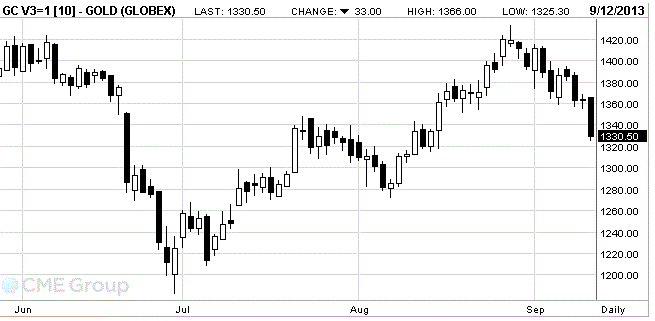Notícias do Mercado
-
16:40
Oil: an overview of the market situation
World oil prices rose modestly today , rising above $ 112 a barrel as investors expect to see that diplomatic efforts to eliminate chemical weapons Syria will avoid attack by the United States, which could further disrupt supplies from the Middle East. Note that the political unrest has affected the volume of production of Libyan oil - it is down to 10 % of the normal values and export declined by about 80,000 barrels per day at the beginning of this month , which led to a substantial increase in oil prices. Despite the fact that Syria is not a major oil producer , is increasing concern that a global conflict could spill over into the leading exporting countries or disrupt naval supplies .
However , the International Energy Agency ( IEA) stated that increases growth forecast for global oil demand in 2014 by 70,000 barrels per day. IEA also increased the estimate of world oil demand in Q3 by about 260,000 barrels a day. It was also noted that the amount of free oil production capacity in OPEC in August fell to 2.94 million barrels a day compared with 3.08 million barrels per day in July, and U.S. production in July increased by 1.1 million barrels a day compared with July 2012
We also add that the course of trade continue to affect yesterday's inventory data , which showed that gasoline inventories rose last week, suggesting that the increase in demand, which was supported by the summer driving season is likely to halt
The cost of the October futures on U.S. light crude oil WTI (Light Sweet Crude Oil) rose to $ 108.43 a barrel on the New York Mercantile Exchange.
October futures price for North Sea Brent crude oil mixture rose $ 0.83 to $ 112.47 a barrel on the London exchange ICE Futures Europe.

-
16:21
Gold: an overview of the market situation
Gold prices have declined substantially , losing nearly 3 percent , ahead of the Fed meeting next week at which the central bank could shed light on the future of its program of quantitative easing. According to experts , the Fed on the results of its two-day meeting to announce a reduction of its asset-purchase program , the volume of which now stands at $ 85 billion per month, which , in turn , lead to a new Volga sales of precious metals .
Note that the price of gold fell today to the lowest level since Aug. 15 , namely, to $ 1,327.40 an ounce. Against this background, the precious metal may show the biggest weekly decline since June.
Traders said selling pressure increased dramatically , after the metal broke through the 100- day moving average at $ 1,355 an ounce, as well as other key support levels . In addition, they state that the physical demand from Asia is low compared to previous weeks , as retail investors prefer to stay on the sidelines ahead of the Fed meeting next week. Recall that the ultrasoft monetary policy increased the appeal of gold as an investment in recent years , keeping interest rates at extremely low levels, while stirring up fears about inflation have helped to raise the price to a record high in 2011. Gold prices have fallen about 19 percent since then , as the Fed has indicated that it may start reducing monetary stimulus by the end of the year.
According to analysts Thomson Reuters GFMS, gold prices could fall below $ 1,300 an ounce by the end of 2014 , as the decline of quantitative easing may increase the likelihood of higher interest rates. Furthermore, they added that , despite the fact that the Fed's decision to reduce the asset purchase program is already reflected in the price of gold, we can not say that is not going to happen any hesitation , as importantly , when this will be announced .
The cost of the October gold futures on COMEX today dropped to $ 1330.50 per ounce.

-
06:20
Commodities. Daily history for Sep 11’2013:
GOLD 1,363.50 -0.20 -0.01%
OIL (WTI) 107.70 0.31 0.29%
-